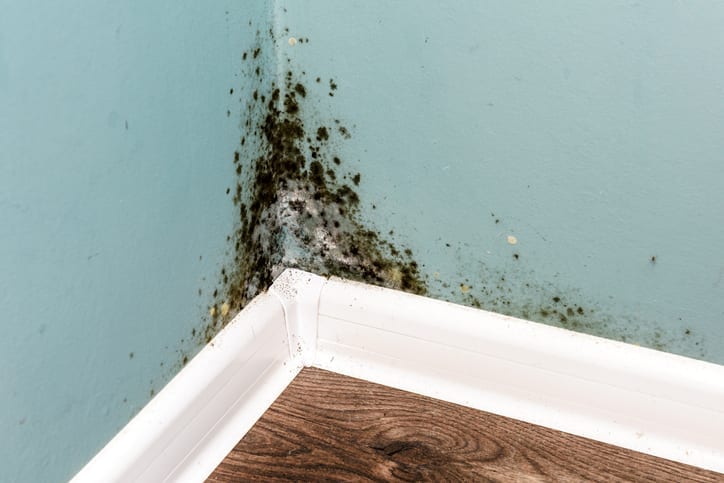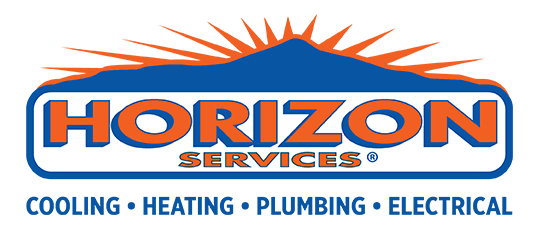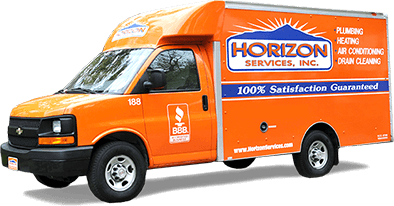
Faulty plumbing, heating, air conditioning and ventilation could be the cause of mold and mildew infestation in your home.
Learn How To Stop These Home Invaders Dead In Their Tracks!
YUCK! YUCK! YUCK!
Nobody wants a home full of mold and mildew. Mold and mildew infestation is unsightly and foul smelling. It’s bad for your health. It can cause structural damage to your home. And most mold and mildew infestations develop as a result of serious, underlying moisture problems somewhere in your home that if left untreated will probably get worse.
Fortunately there are many things you can do to keep these disgusting invaders from infiltrating your home…and to get rid of them if they do.
What are Mold and Mildew?
Molds and mildews are are microscopic organisms. They aren’t animal or plant but are part of the fungi kingdom, like mushrooms and yeast. Like all fungi, they produce enzymes that allow them to decompose and digest organic matter. They also produce spores that allow them to easily spread and reproduce. There are more than 100,000 species of these microorganisms and they are found everywherein the world. They thrive in warm, moist and humid environments and surfaces and often seek out organic materials like wood and food. That means your home is always a potential target and magnet for mold and mildew.
What’s the Difference Between Mold and Mildew?
Mold and mildew are basically fungus cousins. Mold usually manifests itself as a black, brown or green film or fuzz that attacks and thrives on rotting food or any organic material. It can also survive on non-living materials such as tile, plastic, insulation and sheetrock. Mildew, on the other hand, usually has a powdery consistency and forms in a flat pattern. It tends to target a variety of moist, organic surfaces and products made out of animals and plants including leather, paper, books, clothing, ceilings, walls, floors and furniture. Usually where you find one, you can expect to find the other nearby. Mold and mildew can strike any part of your home — indoors or outdoors — but bathrooms, basements and kitchens are usually the most common areas where they occur.
How Do Mold and Mildew Develop in My Home?
Microspic mold and mildew spores can easily travel throught the air and settle in your home. They need moisture to begin growing and organic material to eat, so they will begin gravitating to any surface where excess moisture or water builds up in your home. This moisture can arise from a leaky roof, flooding, bad drainage, poor ventilation, high humidity, flooding, faulty plumbing, problems with your heating and air conditioning system…any source of moisture makes ideal conditions for mold and mildew.
What Are the Signs of a Mold or Mildew Problem?
The most obvious initial signs are visible to the eye– thread-like growths or clusters of specks on fungus-prone surfaces. Other signs include dampness in and around surfaces. Or you may detect a “musty” odor. While sight , feel and smell are always always good indicators of a mold or mildew problem, you cannot always rely upon your senses. Hidden mold and mildew can be growing behind walls and ceilings. Or below floors and carpets. Or behind furniture, appliances and pipes. Or in closets, rarely-used rooms and nooks-and-crannies. The Bottom Line:mold and mildew can form and accumulate anywhere moisture can form and accumulate.
A less obvious sign of mold and mildew infestation may be your health. If you have allergies or asthma, you may be sensitive to molds and experience symptoms such as skin rash, running nose, eye irritation, cough and congestion. In other people, exposure to mold and mildew can produce fatigue, nausea, headaches, muscle pain and respiratory and eye irritation. If you or your family have health problems that you suspect are caused by exposure to mold and mildew, you should consult with your physician.
How Do I Control Mold and Mildew Growth in My Home?
Realistically, there is no way to prevent or rid ALL mold and mildew from your home; the way to control mold growth is to control moisture. The key to ensuring fungus free surfaces is to keep fungus prone places dry and clean.
- Fix Any and All Moisture Problems in Your Home. Look for and stop all water leaks. Repair leaky roofs and plumbing fixtures. Repair or replace old heating, air conditioning and ventilation systems. If water and moisture accumulates in concrete slabs and basement walls, you may need to install a sump pump or dehumidifier. Don’t procrastinate…delays may have devastating consequences.
- Increase Air Circulation Within Your Home. Ventilate your home with fresh dry air from outside. Provide warm air to all areas of the home, especially along the inside of exterior walls. Open windows regularly and use fans. Move large objects a few inches away from exterior walls to provide good air circulation. And become a fan of fans. Install and use exhaust fans in bathrooms, kitchens, and laundry rooms. Use ceiling fans and old-fashioned propeller fans regularly throughout your house.
- Seal Air Leaks. Sealing windows, doors and walls with caulk, stripping and other sealants can prevent moist outdoor air and mold and mildew spores from entering your home.
- Don’t Let Wet Items Linger. Clean and dry water-damaged carpets, clothing, bedding and upholstered furniture within 24 – 48 hours or consider removing and replacing damaged furnishings. Mop and dry all spills and leaks on any floor or surface.
- Run Your Air Conditioner Regularly. Regular use of air conditioning keeps your home cool and dry in the summer months, the peak season for mold and mildew growth.
- Install a Humidification/Dehumidification System. Available with most modern heating and cooling systems or as an add-on to older systems, humidification/dehumidification controls let you set the ideal dryness moisture level for your home and experience ideal indoor air quality any time of year. Indoor humidity levels between 30% and 50% are generally recommended.
- Vacuum and Clean Your Home Regularly. Dusting, sweeping and a little elbow grease will remove or kill much surface mold and mildew before they get a chance to settle and spread.
- Ventilate and Insulate Attic and Crawl Spaces. Warm,moist air will rise and collect in your attic; proper attic ventilation will allow it to dissipate away from your home. A dirt floor in a crawlspace should be covered with plastic as a vapor barrier to prevent moisture from the soil increasing humidity levels in your home. If there is standing water or the soil is wet, dry it out with fans before covering the floor.
- Call an HVAC Contractor: Ask a heating or air conditioning contractor to check your heating and cooling system to make sure it is sized and operating properly to remove humidity. If your system is too big or if the airflow is incorrect your air conditioner will not remove humidity like it should. Also, ask the contractor to check your duct system for air leaks, and proper size and air flow to each room.
- Call Other Contractors: If your moisture problem is due to a leak from a water pipe, toilet, bathtub or shower, hire a plumber to repair the leak. If the leak is in your roof, ceiling or walls, hire a roofing contractor. If the leak has caused substantial water and structural damage or if your mold and mildew infiltration is extensive, you will want to hire a contractor who specializes in mold remediation and water damage repairs.
- Hit the Bleach. Floors, counters, window sills, appliances and kitchens and bathroom fixtures should be cleaned regularly with not just soap or detergent but an anti-bacterial and anti-fungal agent. One containing ammonia bleach is your best bet for overall effectiveness. But be careful — bleach can damage surfaces, clothing and skin, especially if you use it straight and don’t dilute. Be sure to wear gloves and protect yourself and surfaces from splatters.
- Try a Natural a Natural Remedy. As a safe and environmentally-frinedly alternative to bleaches and other chemical anti-fungal agents, you may want to look in your kitchen cupboard or pantry and try some distilled vinegar, tea tree oil or grapefruit seed extract. Use straight or mix with water, put in a spray bottle and wipe with a sponge on most surfaces to clean up or prevent mold and mildew formation.
Additional Mold and Mildew Cleaning Tips
When cleaning and removing mold and mildew from rooms and surfaces, you want to minimize your exposure. Try to determine the extent of the mold and mildew infestation. If the area is small and well-defined, you can probably do the job yourself, provided that you are free of any allergies or health problems. However, if the mold and mildew infestation is deep or covers a large area, you should leave the cleaning to a professional.
If attempting to clean mold and mildew by yourself, follow these steps:
- Protect yourself by using goggles, gloves, and breathing mask while working in the area, especially in tight spaces.
- Seal off area from the rest of your home. Cover heat registers and vents. Cover all your furniture. Open a window before you start clean up.
- Scrub all affected hard surfaces: First use a mild solution of laundry detergent and warm water. Then use a solution of 1/4 cup bleach to one quart of water. Wait 20 minutes and repeat. Wait another 20 minutes. Last, apply a borax-based detergent solution and do not rinse. This will help kill existing fungus and prevent future fungus growth. Give the entire room a good cleaning, dusting and vacuuming. Wash bedding, curtains and clothes if exposed.
- Bag and discard all moldy materials (rags, sponges etc.)
Cleaning Mold and Mildew on Household Items
- Clothing, bedding, fabrics. Simply run through the laundry with detergent. Use bleach on whites and linens.
- Wood, metal, plastic, glass, and ceramics. Mix a solution of one cap bleach to one quart of water. Bleach may fade colors, so test your beach solution before using. If fine, wipe down your articles with the solution and dry with towel.
- Beds, furniture, books and other unwashables. If moldy, you should probably discard and replace. If you decide to keep, take outside, vacuum thoroughly and air out. Afterward if item is odor-free, you should be okay, but keep an eye out for future molde or mildew growth.
Got a Mold or Mildew Problem? Call Horizon Services to Check Out Your Plumbing, Heating or Air Conditioning System!
For Fast, Friendly Service – 24 Hours a Day/7 Days a Week:
- New Castle County, DE: 1-800-642-4419
- Kent County, DE: 1-800-642-4419
- Delaware County, PA: 1-800-642-4419
- Chester County, PA: 1-800-642-4419
- Montgomery County, PA: 1-800-642-4419
- Bucks County, PA: 1-800-642-4419
- Gloucester County, NJ: 1-800-642-4419
- Camden County, NJ: 1-800-642-4419
- Burlington County, NJ: 1-800-642-4419
- Cecil County, MD: 1-800-642-4419
- Click Here to Schedule A Plumbing, Heating or Air Conditioning Appointment Online!
Horizon Services is the Delaware Valley’s leading plumbing, heating, air conditioning, drain cleaning and sewer & water line replacement services company, providing repair, maintenance, sales and installation to homeowners in Delaware (New Castle County, Kent County), Pennsylvania (Delaware County, Chester County, Montgomery County, and Bucks County), New Jersey (Gloucester County, Camden County and Burlington County), and Maryland (Cecil County). Horizon Services is headquartered in Wilmington, DE with additional offices in Audubon, PA and Mount Laurel, NJ.


